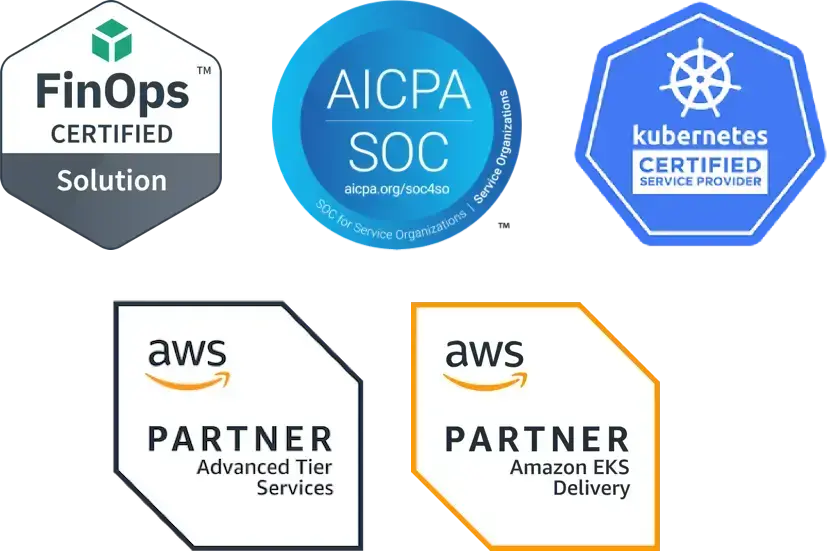5 Lessons Learned Managing Kubernetes in Enterprise Organizations
Now the recognized standard for container orchestration, Kubernetes has revolutionized how organizations deploy and manage applications and services. However, deploying Kubernetes at scale in enterprise environments presents unique challenges that are different from those faced in smaller companies. Let’s walk through the key lessons we’ve learned from enabling enterprise clients to deploy applications and services successfully to production environments.
1. Ensure Consistency
One of the biggest challenges faced by large organizations adopting Kubernetes is maintaining consistency across multiple teams and departments. In a large and established organization—an enterprise—it's very likely that different teams have diverse ways of creating and deploying apps and services. When each team adopts Kubernetes, it is likely to have its own ways of managing clusters, use different sets of tooling, and have distinct ways of developing and deploying applications to Kubernetes.
Depending on the organization and how widely Kubernetes has been adopted internally, this difference might initially seem acceptable, but most companies get to a point where the lack of standards causes operational problems, financial issues, and increased security risk. To address these challenges, enterprises need to find ways to promote consistency while allowing for some degree of flexibility. Some approaches to addressing consistency challenges include:
- Establishing clear guidelines and patterns for Kubernetes usage
- Implementing continuous integration (CI) checks to enforce standards
- Developing and enforcing policies across the organization (preferably automatically)
- Using admission controllers to ensure compliance with organizational standards
When creating and enforcing standards to ensure consistency, it's crucial to consider the "how," "what," "why," and "who" aspects of your policies to ensure buy-in from all stakeholders. This will also help you to implement it effectively (and consistently!) across the organization.
2. Architect Kubernetes for Enterprise Scale
Another critical consideration for enterprises moving to Kubernetes infrastructure is determining the optimal cluster architecture. This decision requires you to weigh the benefits and drawbacks of different approaches, such as:
- Running a single cluster for multiple teams' applications
- Creating separate clusters for different teams or departments
- Implementing a hybrid approach based on specific needs
Without the proper setup, it's easy for certain workloads to negatively impact your cluster's performance. Consider creating separate clusters, or at least separate node groups, for things like CI runners, which often require very specific node types and configurations to run and scale successfully. By isolating these workloads in dedicated clusters, your organization can prevent a few workloads from impacting the performance of all your production applications.
3. Integrate Kubernetes with Existing Infrastructure
Enterprises often run apps in many diverse types of infrastructure in addition to Kubernetes. For example, you might run an app directly on a virtual machine, in other containerized systems, in different clouds, on-premises, or even directly on hardware. It can be difficult to meet security and compliance requirements in environments with such diverse infrastructure types.
Despite this complexity, you can meet these requirements if you have similar security tools, operating systems, and image-hardening protocols in place across all of your environments. You need to both have the tools and make sure those tools are easy for devs to use. This means that, for example, even if there is a type of operating system for containers that excels in Kubernetes, you may choose to use the same operating system as your other environments instead to minimize confusion and complexity.
4. Address K8s Security Concerns
Kubernetes introduces security considerations that differ significantly from running applications directly on virtual machines. In addition to understanding the machine instances themselves, your security teams must adapt their approaches to look at:
- Container images and their composite layers
- Container permissions and interactions on the host machines they run on and permissions for other containers on those machines
- How workloads and containers communicate with each other
- Traffic at different layers of networking
- How confidential information is handled
Security and compliance teams must develop a deep understanding of the structure and dynamics of Kubernetes clusters and workloads. This knowledge enables them to implement effective security measures tailored to this ephemeral containerized environment.
Plus, organizations need to recognize that security tools designed for virtual machines may not provide the same functionality or data in Kubernetes clusters. Once an organization understands this, it often adopts Kubernetes-specific security solutions.
5. Support Development Teams
In both smaller organizations and enterprises, it’s important to carefully consider how much Kubernetes knowledge your developers need to possess in order to develop and deploy apps and services. Kubernetes is (in)famously complex. Getting a handle on a whole new array of Kubernetes components, such as deployments, services, ingress objects, and configmaps, can be overwhelming for developers who are not Kubernetes experts.
Without proper guidance and tooling, developers can easily and inadvertently introduce issues into the system or require significant support from Site Reliability Engineering (SRE) teams to deploy their applications successfully. To address this challenge, many organizations are investing in self-service platforms, such as internal developer platforms, that abstract away Kubernetes complexity. These platforms enable developers to easily configure and deploy applications to Kubernetes without requiring in-depth knowledge of the underlying infrastructure.
Embrace Kubernetes in the Enterprise
Adopting Kubernetes in enterprise organizations presents unique challenges that require careful consideration and planning. By focusing on consistency, appropriate architecture, integrations with existing tooling, security, and developer experience, enterprises can take advantage of Kubernetes' full potential while minimizing risks and reducing operational overhead.
Key takeaways for successful enterprise Kubernetes adoption include:
- Implement standards and automate policy enforcement to ensure consistency across teams and security and compliance requirements are enforced
- Carefully plan cluster architecture to optimize performance and resource utilization
- Integrate Kubernetes with existing infrastructure
- Adapt security practices to address Kubernetes-specific concerns
- Invest in tools and platforms that simplify Kubernetes for developers
By learning from these lessons and adapting strategies to fit your organization’s specific needs, you can successfully navigate the complexities of Kubernetes adoption and take advantage of this powerful container orchestration platform's many benefits.


